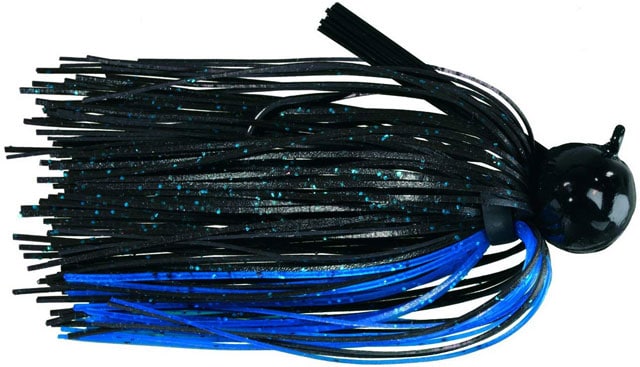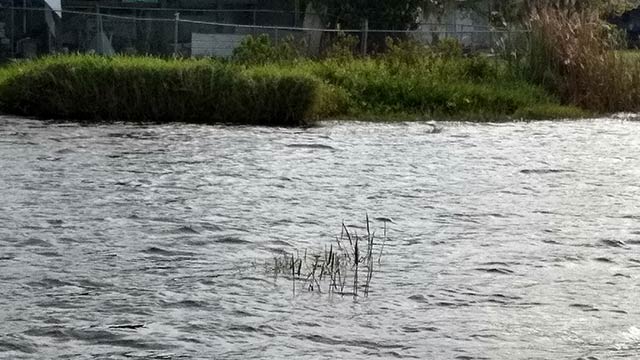Targeting bass in murky or stained water can be a turn off for some anglers. However, there are a few tactics anglers can use to improve their chances of catching more fish in that muddy water situations.
1. Use Larger Lures

In murky water, bass can have a tough time picking up on a standard sized bait. Oftentimes, slightly upsizing your lures can be the difference in catching fish or getting skunked when fishing dirty water. Instead of using a 5-inch senko, go to a 6- or 7-inch bait. Or replace a ½ ounce lipless crankbait with a ¾ or 1 ounce lure. Using baits with a larger profile give bass in murky water a better opportunity to find your lure when visibility is low.
2. Use Darker Colored Lures
Although it may seem counterintuitive, it’s best to use darker colored baits in stained water. This is especially true when it comes to soft-plastics and jigs. Darker colors give off more of a silhouette, allowing bass to see the bait from further away. Colors such as black, black and blue, june bug, and june bug red are all excellent for targeting bass in murky bodies of water.

With that being said, If I’m using lures such as crankbaits and spinnerbaits, I do prefer brighter colors. Chartreuse, white and chrome are all good options when fishing a moving bait. They give off more flash and draw more strikes in dirty water.
3. Use Noisy Lures
When fishing bodies of water that aren’t clear, use baits that create sound and vibration. For example, chatterbaits and spinnerbaits give off a lot of vibration. In addition, crankbaits with rattles produce a lot of extra noise that often help fish find the bait in murky water.
Also, a topwater lure, such as a buzzbait, which causes a lot of commotion on the surface, is another good option when fishing dirty water. Anglers can add rattles to their worms or creature baits for increased sound.
4. Gold Blades Excel
When throwing spinnerbaits or chatterbaits in stained water, I like using baits with blades. Gold always seems to trigger more bites in muddy water because it gives off a little more flare than a silver blade. This allows fish to find the bait a lot easier and ups your chances of catching more bass.
5. Fish Tighter to Cover

In stained water, bass typically push tight to some type of cover. Whether it’s grass, reeds, bushes, rocks, or laydown trees, fish feel more comfortable holding tighter to cover when the visibility is limited.
Therefore, it’s important for anglers to put their bait in the strike zone and fish as close to cover as possible. That might mean using a heavy weight to flip into thick grass or simply fishing your jig right alongside a fallen tree. Fishing closer to cover gives bass a much better chance to find the bait and increases an angler’s chances of catching those fish.
6. Slow Your Approach
Finally, when I’m fishing a stained fishery, I like to slow my approach just a little bit. I want to be a little more thorough in the way I fish a certain piece of cover. I may make multiple casts from different anglers to the same bush or laydown. Or I might soak a worm of creature bait longer, allowing it to rest on the bottom around cover.
These tactics simply give fish more time to locate my lure and hopefully strike it. Slowing my approach can results in catching a bass that I wouldn’t catch had I not made multiple casts or fished my bait more thoroughly.
Back to You
Try to remember some of these tips the next time you find yourself on a murky or stained body of water. I typically like to apply these tactics when fishing water that has less than a foot of visibility. Be sure to give them a try on your next outing and I’m sure they won’t disappoint.
Feel free to leave a comment down below and let us know what your favorite lure to throw in murky water is. We’d love to hear from you!
As always, happy fishing and keep your hooks wet!
